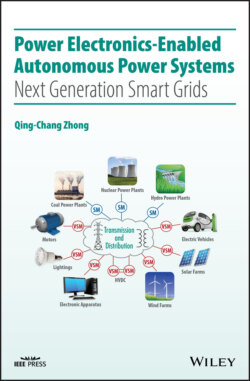Читать книгу Power Electronics-Enabled Autonomous Power Systems - Qing-Chang Zhong - Страница 46
2.8 SYNDEM Roots 2.8.1 SYNDEM and Taoism
ОглавлениеThe principle of synchronization and democratization is inspired by, and has deep roots in, the Chinese classic philosophical text Tao Te Ching; see, e.g., (Lao Tzu 2016a,b). Written by Lao Tzu some 2500 years ago, it is believed to be the second most translated work in the world after the Bible. It is a fundamental text for both philosophical and religious Taoism, with strong influences on other schools, such as Legalism, Confucianism, and Chinese Buddhism. It describes the Tao (principles) of nature and Te (virtue) for the human race, with emphases on
(1) The harmony between nature and the human race. Nature is vast and there are many people. However, nature and the human race can and should live in harmony. Excessive human activities may damage nature, which can in turn affect or even destroy the human race.
(2) The criticality of following natural principles. An artificial solution may work for a short period but in the long run it could be catastrophic if it does not follow natural principles. It is critical to let things happen rather than make things happen.
(3) Everything is nothing and nothing is everything. If natural principles are not followed, whatever developed by the human race may get destroyed. “When natural principles are followed, even if there is nothing, one would appear. Then, one generates two; two generates three; and three generates many.”
(4) Simplicity and minimum action. “Managing a country is like cooking a small dish.” Not much needs to be done. Complex solutions have no practical benefit. A solution for a challenging problem has to be simple and non‐intrusive.
The deep roots of SYNDEM smart grids in Tao Te Ching is evidenced by the following1:
(1) The newly added renewable energy sources and flexible loads are harmonized to behave in the same way as conventional power plants.
(2) The most natural principle of synchronization is followed by all players in SYNDEM smart grids. They actively interact with the grid to maintain system stability. They are not forced or led through commands given over communication networks.
(3) A SYNDEM smart grid can work with one, two, three or many active players, and when needed a large power system can decompose into small regional grids or even microgrids in residential homes. It is extremely scalable and the architecture is very simple.
(4) Managing a SYNDEM smart grid becomes very easy because all suppliers and loads in a grid can autonomously take part in the regulation of the grid. In other words, a SYNDEM smart grid manages itself with minimum human intervention.
